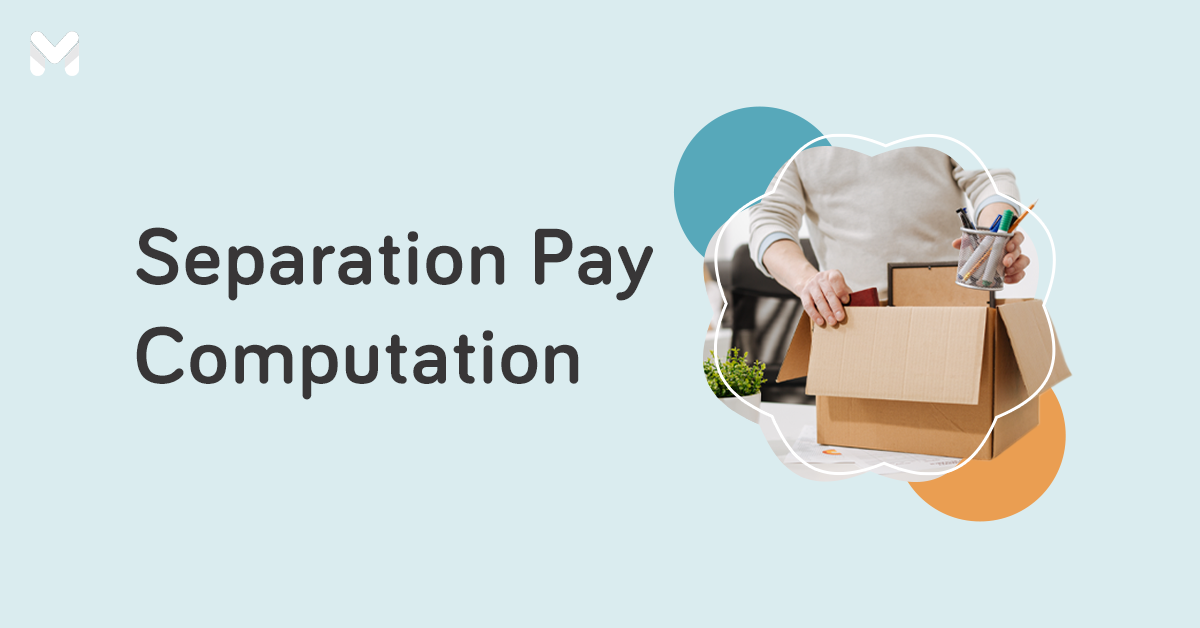There’s a myriad of reasons employees leave their employers. You know the common ones—poor management, impractical office locations, career dead ends. COVID-19 just added another one to that list: pandemic epiphanies.
According to a report by Sprout Solutions, a significant percentage of human resources (HR) professionals—i.e., 63% in small and medium enterprises and 58% in large enterprises—saw an uptick in employee turnover during the pandemic. The same professionals claimed that 65% of employees prefer hybrid work.[1] The connection between the two is evident, as more employees seek the most fulfilling jobs in the world that can give them better autonomy, greater flexibility, and more financial freedom.
This movement that calls for better employee well-being has ushered in a mass exodus from the workplace—a phenomenon dubbed the “Great Resignation.”[2] If you plan to jump on this bandwagon, start crunching the numbers now and do a back pay computation to know exactly what you’ll get before running away to greener pastures.
Here’s all you need to know about how to compute your backpay in the Philippines in 2022.
What is Back Pay?
According to the Department of Labor and Employment (DOLE), back pay (otherwise known as last pay or final pay) refers to the total monetary compensation that an employer must pay a former employee, regardless of the cause of separation from the company.[3] Back pay is by definition the last cash transaction between the employer and employee after the latter’s exit.
Who is Eligible to Receive a Back Pay?
Any resigned or terminated employee—regardless of the cause of separation from the company—is eligible to receive back pay, subject to company policy, internal practices, or agreement with the employer.
Is Back Pay Mandatory in the Philippines?
No. It’s understandable why a lot of people think it’s mandatory—it’s a buzzword after all. But legally speaking, there’s no law in the Philippines that explicitly mandates companies to release back pay to resigned or terminated employees. DOLE only provides guidelines on back pay issuance.
That’s why it’s important to ask your HR department whether or not your company offers this kind of post-employment benefit. This information is something you ideally should’ve known before accepting the job offer. Still, it’s not too late to reach out to your HR team to confirm this. Being sure is better than waiting for nothing.
How to Compute Back Pay in the Philippines 2022

No need to stress over how to compute your back pay. Listed below are the usual elements included in back pay computation, as well as the common liabilities factored into the final amount.
📝 Typical Components of Back Pay
The following components are part of the formula on how to compute back pay for resigned employees in the Philippines:
🖩 Unpaid Salary
The prorated amount of your salary is one of the main components of your back pay computation, according to DOLE. The amount will be equal to the number of days you’ve worked leading up to the most recent cut-off.
🖩 Prorated 13th Month Pay
Back pay computation in the Philippines includes the 13th month pay. But take note that the amount you’ll get is prorated, which means that your 13th month pay depends on the total number of days you worked in the current year.
Still, regardless of the amount, you can put that money to good use. One way to dispose of it is to buy new clothes so that you can power dress to boost your confidence and become a better professional in your new job.
🖩 Leave Conversions
If your employment contract specifies that your unused vacation and/or sick leaves are convertible to cash, then you can expect their cash conversion to be included in your back pay computation.
🖩 Tax Refunds
Usually, if you resign before the 12th month of the year, you’re eligible to receive a refund on tax payments. However, this applies only if your tax dues are lower than the sum of your withheld taxes. If you’re eligible for a tax refund, expect this item to be reflected on your back pay computation for 2022.
🖩 Separation Pay
Your separation pay can be part of your back pay computation, according to Articles 298 to 299 of the Labor Code. The employer can also use the company policy and/or the individual or collective agreement entered by both employer and employee as the bases for whether or not to include this item in the back pay.
🖩 Retirement Pay
Back pay, according to DOLE, must also include your retirement pay, if applicable. If that’s a sizable amount, you can use it to develop new pandemic-proof skills to earn more income just in case you still crave the occasional gig after retirement.
🖩 Cash Bonds or Deposits
Generally, requiring cash deposits from employees is not allowed among employers. This is only acceptable for businesses or industries where the practice of making deposits is necessary, as determined by the rules and regulations issued by the Secretary of Labor. Also, imposing cash bonds or deposits can only be done upon compliance with law requirements.
In case you were legally required by your employer to post cash bonds or deposits, you should get your money back through your final pay.
📝 Deductions from Your Back Pay
A back pay calculator in the Philippines also takes into account the items to be deducted from your final withdrawable amount. Here are some of the costs you may owe your company:
🖩 Mandated Deductions
Your back pay will be subject to common deductions, which include PhilHealth, SSS, and other contributions.
🖩 Loan or Cash Advance Balances
If you borrowed money from your company that you weren’t able to pay off before resignation, expect that amount to be deducted from your back pay.
🖩 Office Liabilities
Did you damage or break any of your office gadgets, like your company phone or laptop? Or maybe you lost one of your company-provided office tools like a mouse or a pair of headphones? The cost of damaged or lost office equipment will be factored into your final pay computation.

Sample Back Pay Computation for 2022
Now that you know what your company owes you as well as what you owe them, it’s time to do a back pay computation.
Take this situation for example: Jenny started working for Company XYZ in April, and she resigned in December of the same year. Here’s the breakdown of her back pay computation if her gross monthly salary is ₱26,000 or ₱1,195 a day.
Note: For this sample back pay computation, we’ll use the mandated 4% premium rate for PhilHealth contributions in 2022.
| Earnings/Profits | Deductibles |
|---|---|
| Unpaid Salary (15 working days): ₱17,925 | Tardiness: ₱0.00 |
| Prorated 13 Month Pay: ₱19,500 | Absences: PHP .00 |
| Sick Leave Conversion (5 Days): ₱5,975 | Withholding Tax: ₱684.33 |
| Tax Refund: ₱0.00 | Pag-IBIG Contribution: ₱100 |
| SSS Contribution: ₱1,125 | |
| PhilHealth Contribution: ₱390 | |
| Total Pay: ₱43,400 | Total Deductions: ₱2,429.33 |
| Net Pay: ₱40,970.67 |
To get an idea how much you’ll receive, you can also use this salary and 13th month pay calculator from Sweldong Pinoy.[4]
When Should I Expect My Back Pay?
According to DOLE, back pay must be released to an employee within 30 days from the date of separation or termination of employment. The labor department also encourages employers to follow their own company policy or the individual/collective agreement with the employee if either is deemed more favorable.
How to Fast Track Your Back Pay Release

Ideally, you should prepare your finances before quitting your job. That way, you don’t have to rely on your back pay to sustain yourself while transitioning to your new role.
But if you really need to get your back pay ASAP, here are some tips to help you out.
1. Talk to Your Human Resources Department Upon Resignation
Upon tendering your resignation, talk to your HR to get further instructions on your exit. Take this opportunity to confirm if you have any liabilities that will be deducted from your back pay. Also, get clarity about any confusing section in your employment contract that could affect your back pay computation.
2. Complete Your Clearance Requirements as Soon as Possible
Once you’re issued a clearance form, complete it as soon as possible. If you delay this, the release of your back pay will likely be delayed, too. Turn over your company equipment and supplies to the administrative department, and settle all your dues and monetary liabilities with the finance department. Schedule your appointment with your bosses to get their sign-offs as well.
3. Decide On Your Back Pay Disbursement Mode
While processing your clearance, ask your HR Department about the disbursement mode for your back pay. You’ll likely be given options—from check to wire transfer. Choose the most convenient one.
4. Follow Up On the Status of Your Back Pay Release
According to DOLE, you’re supposed to receive your back pay after resignation—i.e., within 30 days from your exit. But delays are inevitable, so if your waiting time has surpassed the one-month mark, you should follow up with your HR department to check the status of your back pay release.
Back Pay Computation FAQs
1. What is the difference between back pay and separation pay?

Your separation pay is different from your back pay, although the former can be included in the latter, as advised by DOLE.
What makes separation pay distinct is the instance under which you can claim it. Voluntary resignation doesn’t entitle you to a separation pay unless otherwise stated in your employment contract or in the company policy.
You can claim your separation pay only when your employment has been terminated due to any of the following reasons:
- Redundancy
- Retrenchment
- Closure of business (except when the closure is due to financial losses)
- Installation of labor-saving equipment (e.g. advanced robots, automated machines, among others)
- Termination due to a disease
On the other other hand, the following circumstances will keep you from receiving your separation pay:
- Serious misconduct
- Willful disobedience
- Gross and habitual neglect of duties and responsibilities
- Fraud or willful breach of trust
- Commission of a crime by the employee against the employer and other personnel
- Other analogous causes
Read more: Legit Online Job Sites to Help You Land a New Job in 2022
2. What is the difference between back pay and retroactive pay?
While back pay consists of the wages that your employer must still pay you, retroactive pay refers to the difference between what you should’ve earned for your services versus what the employer actually gave you as compensation.
Retroactive pay is usually disbursed to rectify payroll errors or compensation shortfalls during previous pay periods. It could be that your wages were miscalculated, or your salary raise was not reflected on your last paycheck. Your retroactive pay should make up for that difference.
3. Is back pay taxable?
Yes, your back pay is subject to the appropriate taxes under the TRAIN law.[5] You can refer to this tax table (effective until December 31, 2022) to check your tax rate:
| Net Taxable Income | Tax Rate |
|---|---|
| Less than ₱250,000 | 0% |
| ₱250,000 - ₱400,000 | 20% of excess over ₱250,000 |
| ₱400,000 - ₱800,000 | ₱30,000 + 25% of excess over ₱400,000 |
| ₱800,000 - ₱2 million | ₱130,000 + 30% of excess over ₱800,000 |
| ₱2 million - ₱8 million | ₱490,000 + 32% of excess over ₱2 million |
| Over ₱8 million | ₱2.41 million + 35% of excess over ₱8 million |
4. What else should I receive after resignation?
After leaving your employer, expect to receive not just your back pay but also the following documents:
Certificate of Employment
This document validates your professional engagement with your former employer, including the type of work you rendered as well as other details about your tenure.
BIR Form 2316
Also known as the Certificate of Compensation Payment or Tax Withheld, Form 2316 is an official document detailing your gross income and the taxes withheld by your employer during the fiscal year. This form also proves that the salary and any other form of remuneration you received from your employer have been subject to the appropriate taxes.
Back Pay Release Waiver and Quitclaim
Companies usually require resigned employees to sign a quitclaim or release waiver. By signing this formal document, you waive any claim or demand against the employer. That means that any ongoing disputes will end through a settlement. Also, this document prevents any future disputes, which can be costly and time-consuming both for you and your former employer.
Final Thoughts
Whatever your reason for quitting—be it joining a company that prioritizes hybrid work or switching to any of the top industries offering high employee bonuses—leaving a job can be bittersweet. You’re not just leaving behind a set of tasks. You’re essentially ending an era and starting a new one in your career.
While doing your back pay computation is one of the exciting things about quitting, remember to still be graceful about your exit. Deal with your company liabilities responsibly, turn over your tasks and projects on time, and keep your lines open after resignation so that you can maintain contact with a few key people in your former organization.

Sources:









